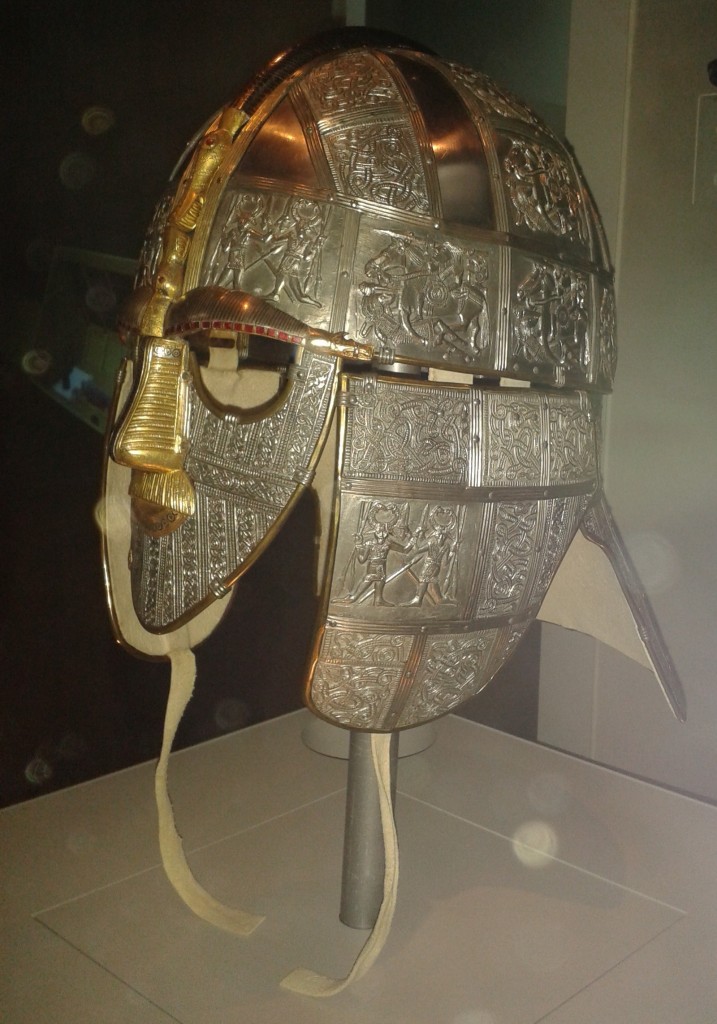Today, since I was passing by, I dropped in to the British Museum’s new gallery celebrating Anglo-Saxon (or, if you prefer, Old English) culture and art. To anyone who thinks Saxon just means crude and rough, dull Dark Ages stuff, think again. The new gallery, Room 41 (upstairs, almost above the main entrance) is resplendent with finely-crafted treasures. The most famous among them are from the Sutton Hoo ship burial of some real-life Beowulf-like leader. And one of the finest of the pieces from that collection is the carved gilt helmet.

At first glance, the carvings on the helmet seem to be restricted to the panels, which show warriors with swords, on foot or on horseback, along with elaborate ‘Celtic’ patterns of knotwork. That would be fine enough, but there is more. The nose and eyebrow guards of the helmet, together with the moustache, form a large winged animal with angry red inset garnets for its eyes, fiery red rectangular garnets bordering its wings. It touches nose-to-nose with a snake or dragon – the old word for both was ‘worm’ – that stretches as a crest over the top of the helmet. The worm’s eyes too are of garnets. And even better, the ends of the eyebrow/wings are shining gold boar’s heads, just like the boar-headed helmet mentioned in the Beowulf poem.
So this marvellous helmet, this treasure almost beyond price (both now and when it was a prince’s armour and emblem), is adorned, no, actually made of no less than three powerful beasts, each perhaps with almost magical powers: flight, fire, and ferocity, we might say. It isn’t hard to imagine that these were talismanic animals, symbols of warrior bravery, strength and victory in battle. Were they spirit guides, protective animals chosen or sent to guard the wearer from harm? I should think so.
So, what was the Old English feeling towards animals? Certainly they were taken for food; but on the evidence of this splendid piece of royal armour, they were surely also admired for their strength, speed, and courage. Can we describe that as love of nature? Of course we can.
One final question: how long have the English loved nature? We may guess the date: since the foundation of our kingdom by Hengist and Horsa in c. 550 AD, it seems. Both of our founder-kings (they ruled together) had animal names: Hengist means stallion, while Horsa (you guessed it) means horse. Not too hard to imagine which fine strong proud animal their parents specially admired, then.
